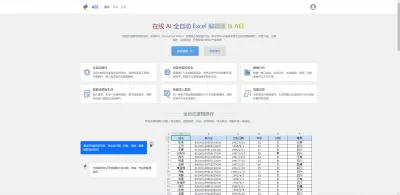Fortran code on GitHub -- also see fortran-lang package index
- Art and Music
- Astronomy and Astrophysics
- Benchmarks
- Biology and Medicine
- Climate and Weather
- Code Tools
- Compiler Tests
- Computational Chemistry
- Computational Fluid Dynamics
- Containers and Generic Programming
- Cryptography
- Databases
- Dates and Times
- Earth Science
- Economics
- Engineering
- Error Handling
- Expression Parsers
- Fast Fourier Transform
- File I/O
- Finite Elements
- Fortran Books and Tutorials
- Games and Puzzles
- Graphics, Plotting and User Interfaces
- General Purpose
- Interoperability
- Interpolation
- Linear Algebra
- Materials Science
- Molecular Dynamics
- Mesh Generation
- Neural Networks and Machine Learning
- Numerical
- Numerical Integration (Quadrature)
- Ordinary Differential Equations
- Optimization
- Parallel Programming
- Partial Differential Equations
- Particle Physics
- Physics
- Plasma Physics
- Random Number Generation
- Reactor Physics
- Regular Expressions
- Quantum Chemistry and Electronic Structure
- Sorting
- Statistics
- Strings
- Time Series
- Unclassified
- Unit Testing
- Web Programming
- XML
Art and Music
Art1: program written by Richard Williams in 1968. Its purpose was to give non-progammers access to an IBM System/360 Model 40 computer at the University of New Mexico in order to explore artistic and aesthetic uses of the machine.
formidi: small Fortran MIDI sequencer for composing music and exploring algorithmic music, by Vincent Magnin
forsynth: small Fortran synthesizer to explore sound synthesis, sound effects, electronic music, algorithmic music, etc, by Vincent Magnin
MUSICV: Max Mathew's MUSIC V synthesis program, prepared by Bill Schottstaed for gfortran, with additions and fixes by Victor Lazzarini.
TapTempo Fortran: command line taptempo written in modern Fortran, by Vincent Magnin. Listen to a song and hit enter key with style and you'll get the corresponding number of beats per minute (BPM).
Tonbandfetzen: collection of command-line tools to compose music based on audio fragments generated from plain text input, by Jan Berges
uzura3: mpeg audio layer 3 encoder written in Fortran 90/95 (mp3 encoder), by cure-honey. There is also uzura1_fpm that works with the Fortran Package Manager.
XenakisFreeStochasticMusicFortran: working versions of a Xenakis FORTRAN program (Xenakis 1971 Formalized Music p 149)
Astronomy and Astrophysics
1-D-Supernova-shock-radius-evolution: 1-D version of the ZEUS 2-D CODE which solves hydrodynamic equations is applied to a SuperNova Remnant (SNR), by Lorenzo Cavazzini
Adaptive Spherical Overdensity Halo Finder (ASOHF): primarily designed to identify bound dark matter structures (dark matter haloes), as well as their stellar counterparts (galaxies) in the outputs of cosmological simulations. Associated paper: The halo-finding problem revisited: a deep revision of the ASOHF code, by David Vallés-Pérez, Susana Planelles, and Vicent Quilis, Astronomy&Astrophysics, 664 (2022).
ALBUS_ionosphere: determines the ionosphere total electron content (TEC) over any location on the Earth as a function of location and time, by Tony Willis. It then uses the TEC and a model of the Earth's magnetic field to compute the ionosphere's effect on the Faraday Rotion Measure (RM) observed for an astronomical radio source. The ionosphere's contribution to the RM can then be removed.
aquila astrophotography package: small LRGB astrophotography reduction and processing package, by Dominik Gronkiewicz. The package consists of the programs aqstack for stacking and reduction of monochromatic CCD images and aqlrgb for compositing images from many filters into one color picture.
ARTEMIS-P: Anisotropic Ray Tracer for Electromagnetism in Magnetospheres, Ionospheres and Solar wind, including Polarisation, by Baptiste Cecconi and C. Baskevitch
astro-api: makes the astronomical calculations for yr.no, by Frank Thomas Tveter et al. The astro-api software uses the JPL ephemeride tables and the SOFA astronomical library, along with algorithms for quick and precise searches, to provide astronomical data on demand, such as sun/moon rise/set, twilight, polar day/night, moon phase, eclipse, solstice times.
astro-fortran: modern Fortran implementations of standard models used in fundamental astronomy, by Jacob Williams. It is a refactoring of IAU SOFA.
astroTools: command-line tools for astronomy and astrophysics, by AstroFloyd
ATES-Code: ATES hydrodynamics code, by AndreaCaldiroli, computes the temperature, density, velocity and ionization fraction profiles of highly irradiated planetary atmospheres, along with the current, steady-state mass loss rate.
Automatic Line Fitting Algorithm (ALFA): identifies and fits hundreds of lines in emission line spectra in just a few seconds. It does this using a genetic algorithm to optimise the line parameters, by Roger Wesson
BI-spectra and Non-Gaussianity Operator (BINGO): numerically evaluates the scalar bi-spectrum and the non-Gaussianity parameter fNL in single field inflationary models involving the canonical scalar field, by dkhaz. The code is based on the Maldacena formalism to evaluate the bi-spectrum.
CAMB: code for Anisotropies in the Microwave Background, by cmbant
cleanest: semiautomatic removal of cosmic rays in astronomical images, by Nicolás Cardiel and Sergio Pascual
code-ans-qnm-share: computes quasi-normal modes of anisotropic neutron stars, by Vincent Lau Shu Yan
Commander: optimal Monte-carlo Markov chAiN Driven EstimatoR which implements fast and efficient end-to-end CMB posterior exploration through Gibbs sampling, from Cosmoglobe
Compact Object Synthesis and Monte Carlo Investigation Code (COSMIC): rapid binary population synthesis suite with a special purpose of generating realistic compact binary populations. COSMIC can also be used to evolve binaries with BSE in a python environment.
Complete History of Interaction-Powered Supernovae (CHIPS): simulates the circumstellar matter and light curves of interaction-powered transients, by DTsuna et al. Coupling the MESA stellar evolution code and codes implemented by the authors, the user can obtain the circumstellar matter profile and light curves of the interaction-powered supernovae.
Cosmology Object Oriented Package (COOP): Reference: Observational effects of a running Planck mass, by Zhiqi Huang
CosmoSIS: cosmological parameter estimation code, by joezuntz et al. It is a framework for structuring cosmological parameter estimation with a focus on flexibility, re-usability, debugging, verifiability, and code sharing in the form of calculation modules.
CUMC3D-Ver1.28: parallel code for high-energy astrophysical simulations, by Ho Sang (Leon) Chan et al. It includes basic MHD solvers and models for simulating accretion discs around supermassive black holes.
cufQUMC: CUDA Fortran version of QU-fitting with replica exchange MCMC method (parallel tempering), with a Python interface, by Shinsuke Ideguchi
DAOPHOT-MCMC: modified version of the subroutine NSTAR.F which implements a Markov chain Monte Carlo (MCMC) routine for fitting highly blended stellar positions and fluxes, by Sean Terry. This code is installed and implemented within the overall DAOPHOT-II structure.
DarkLim: statistical tools for calculating dark matter exclusion limits and sensitivity estimates, from SPICE/HeRALD
dasilva-invariants: Python package with Fortran code to calculate the adiabiatic invariants K and L* from gridded models of Earth’s magnetic field, by Daniel da Silva and Scot Elkington
D-NEAs: Asteroid Thermal Inertia Analyzer (ASTERIA) software. An associated paper is The low surface thermal inertia of the rapidly rotating near-Earth asteroid, by M. Fenucci et al., Astronomy and Astrophysics (2023)
dStar: computing neutron star structure and evolution, by Edward Brown et al.
DUMSES-hybrid: 3D MPI/OpenMP & MPI/OpenACC Eulerian second-order Godunov (magneto)hydrodynamic simulation code in cartesian, spherical and cylindrical coordinates, by Marc Joos
DYnamics, Age and Metallicity Indicators Tracing Evolution (DYNAMITE): Schwarzschild- and stellar-population modelling of stellar systems
ECLIPSE: code for paper "ECLIPSE: a fast Quadratic Maximum Likelihood estimator for CMB intensity and polarization power spectra" (2021), by J.D. Bilbao-Ahedo et al.
etfFinal: Neutron star inner crust code, by mgeshelley
evelchemevol: one-zone closed-box chemical evolution code written in Fortran with OpenMP, by lukeshingles
exotrending: fast and easy-to-use light curve detrending software for exoplanets, from oscaribv
FastQSL: code associated with Zhang, P., Chen, J., Liu, R. and Wang, C., FastQSL: A Fast Computation Method for Quasi-separatrix Layers. The Astrophysical Journal, 2022, 937, 26
fastSHT: code associated with the paper Accelerating spherical harmonic transforms for a large number of sky maps, by Chi Tian, Siyu Li, and Hao Liu
FEMlimb-Astrophysics: algorithm described in the paper Measuring limb darkening of stars in high-magnification microlensing events by the Finite Element Method, by L. Golchin and S. Rahvar, Monthly Notices of the Royal Astronomical Society (2020)
FluxConserving: Fortran code to compute the flux-density conservation, with a Python interface, by Jean Gomes
Fortran-Astro: module for calculating orbital elements, by Cengiz Yıldırım
fortran-astrodynamics: astrodynamics routines by Yuricst
Fortran-Astrodynamics-Toolkit: aims to be a comprehensive library, written in modern Fortran (Fortran 2003/2008), of all the standard orbital mechanics algorithms, by Jacob Williams
fortranMR: library for reading output files generated by MESA (Modules for Experiments in Stellar Astrophysics), by Joshua Aiken. It extends fortranDF to read in files as a data frame.
GaiaHub: Python/Fortran tool that computes proper motions combining data from Gaia and the Hubble Space Telescope, associated with paper GaiaHub: A Method for Combining Data from the Gaia and Hubble Space Telescopes to Derive Improved Proper Motions for Faint Stars, by del Pino, Andrés et al., The Astrophysical Journal, Volume 933, Issue 1, id.76, 18 pp. (2022)
galacticus: semi-analytic model of galaxy formation - a powerful toolkit for modeling the physics of how galaxies form
GALAXEV-fortran: Galaxy Spectral Evolution Library, by G. Bruzual and S. Charlot
GR1D: general relativistic, spherically symmetry, neutrino transport code for stellar collapse. Associated paper: An Open-Source Neutrino Radiation Hydrodynamics Code for Core-Collapse Supernovae, by Evan O'Connor, Astrophysical Journal Supplement Series, Volume 219, Number 2 (2015)
GYRE Stellar Oscillation Code: Given an input stellar model, GYRE calculates the eigenfrequencies and eigenfunctions for the normal oscillation modes of the model, by rhdtownsend
编辑推荐精选


AEE
AI Excel全自动制表工具
AEE 在线 AI 全自动 Excel 编辑器,提供智能录入、自动公式、数据整理、图表生成等功能,高效处理 Excel 任务,提升办公效率。支持自动高亮数据、批量计算、不规则数据录入,适用于企业、教育、金融等多场景。


UI-TARS-desktop
基于 UI-TARS 视觉语言模型的桌面应用,可通过自然语言控制计算机进行多模态操作。
UI-TARS-desktop 是一款功能强大的桌面应用,基于 UI-TARS(视觉语言模型)构建。它具备自��然语言控制、截图与视觉识别、精确的鼠标键盘控制等功能,支持跨平台使用(Windows/MacOS),能提供实时反馈和状态显示,且数据完全本地处理,保障隐私安全。该应用集成了多种大语言模型和搜索方式,还可进行文件系统操作。适用于需要智能交互和自动化任务的场景,如信息检索、文件管理等。其提供了详细的文档,包括快速启动、部署、贡献指南和 SDK 使用说明等,方便开发者使用和扩展。


Wan2.1
开源且先进的大规模视频生成模型项目
Wan2.1 是一个开源且先进的大规模视频生成模型项目,支持文本到图像、文本到视频、图像到视频等多种生成任务。它具备丰富的配置选项,可调整分辨率、扩散步数等参数,还能对提示词进行增强。使用了多种先进技术和工具,在视频和图像生成领域具有广泛应用前景,适合研究人员和开发者使用。


爱图表
全流程 AI 驱动的数据可视化工具,助力用户轻松创作高颜值图表
爱图表(aitubiao.com)就是AI图表,是由镝数科技推出的一款创新型智能数据可视化平台,专注于为用户提供便捷的图表生成、数据分析和报告撰写服务。爱图表是中国首个在图表场景接入DeepSeek的产品。通过接入前沿的DeepSeek系列AI模型,爱图表结合强大的数据处理能力与智能化功能,致力于帮助职场人士高效处理和表达数据,提升工作效率和报告质量。


Qwen2.5-VL
一款强大的视觉语言模型,支持图像和视频输入
Qwen2.5-VL 是一款强大的视觉语言模型,支持图像和视频输入,可用于多种场景,如商品特点总结、图像文字识别等。项目提供了 OpenAI API 服务、Web UI 示例等部署方式,还包含了视觉处理工具,有助于开发者快速集成和使用,提升工作效率。


HunyuanVideo
HunyuanVideo 是一个可基于文本生成高质量图像和视频的项目。
HunyuanVideo 是一个专注于文本到图像及视频生成的项目。它具备强大的视频生成能力,支持多种分辨率和视频长度选择,能根据用户输入的文本生成逼真的图像和视频。使用先进的技术架构和算法,可灵活调整生成参数,满足不同场景的需求,是文本生成图像视频领域的优质工具。


WebUI for Browser Use
一个基于 Gradio 构建的 WebUI,支持与浏览器智能体进行便捷交互。
WebUI for Browser Use 是一个强大的项目,它集成了多种大型语言模型,支持自定义浏览器�使用,具备持久化浏览器会话等功能。用户可以通过简洁友好的界面轻松控制浏览器智能体完成各类任务,无论是数据提取、网页导航还是表单填写等操作都能高效实现,有利于提高工作效率和获取信息的便捷性。该项目适合开发者、研究人员以及需要自动化浏览器操作的人群使用,在 SEO 优化方面,其关键词涵盖浏览器使用、WebUI、大型语言模型集成等,有助于提高网页在搜索引擎中的曝光度。


xiaozhi-esp32
基于 ESP32 的小智 AI 开发项目,支持多种网络连接与协议,实现语音交互等功能。
xiaozhi-esp32 是一个极具创新性的基于 ESP32 的开发项目,专注于人工智能语音交互领域。项目涵盖了丰富的功能,如网络连接、OTA 升级、设备激活等,同时支持多种语言。无论是开发爱好者还是专业开发者,都能借��助该项目快速搭建起高效的 AI 语音交互系统,为智能设备开发提供强大助力。


olmocr
一个用于 OCR 的项目,支持多种模型和服务器进行 PDF 到 Markdown 的转换,并提供测试和报告功能。
olmocr 是一个专注于光学字符识别(OCR)的 Python 项目,由 Allen Institute for Artificial Intelligence 开发。它支持多种模型和服务器,如 vllm、sglang、OpenAI 等,可将 PDF 文件的页面转换为 Markdown 格式。项目还提供了测试框架和 HTML 报告生成功能,方便用户对 OCR 结果进行评估和分析。适用于科研、文档处理等领域,有助于提高工作效率和准确性。


飞书多维表格
飞书多维表格 ×DeepSeek R1 满血版
飞书多维表格联合 DeepSeek R1 模型,提供 AI 自动化解决方案,支持批量写作、数据分析、跨模态处理等功能,适用于电商、短视频、影视创作等场景,提升企业生产力与创作效率。关键词:飞书多维表格、DeepSeek R1、AI 自动化、批量处理、企业协同工具。
推荐工具精选
AI云服务特惠
懂AI专属折扣关注微信公众号
最新AI工具、AI资讯
独家AI资源、AI项目落地

微信扫一扫关注公众号








